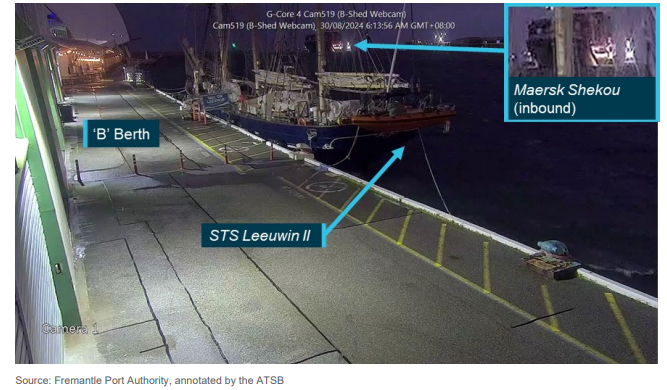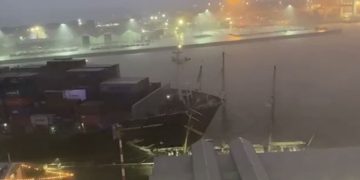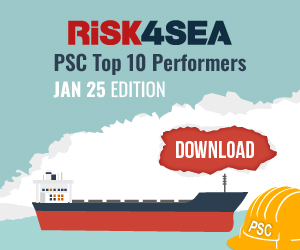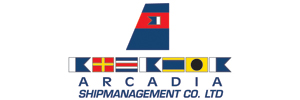The Australian Transport Safety Bureau (ATSB) issued an interim report regarding the events leading up to the collision involving container ship Maersk Shekou and tall ship STS Leeuwin II, Fremantle, Western Australia.
What happened
On 22 August 2024, Maersk Shekou, carrying 4,164 containers, arrived off Fremantle, Western Australia, from Adelaide and began drifting offshore due to a delay caused by industrial action. Its scheduled berth at CT3 was postponed to 25 August, and further adverse weather delayed its pilot boarding until 30 August at 0500. Preparations began early that morning with engine checks and anchor readiness. Despite challenging wind conditions reaching 30 knots, the ship made its way to the outer pilot boarding ground. At 0455, two harbour pilots boarded, and the ship continued its transit through the deepwater channel under pilot instructions while maintaining about 11.6 knots.
 As the vessel progressed, wind gusts intensified, peaking at 54 knots. By 0535, the pilot informed Fremantle VTS that the ship was proceeding slowly, awaiting daylight. Tug placements were arranged, with Svitzer Redhead made fast on the port quarter at 0558. A significant turn was initiated to align with the inner harbour entrance channel (IHEC), with wind speeds decreasing slightly but remaining strong. The ship continued inbound, and by 0609, tugs were secured at key positions. Despite the pilot’s orders and helm adjustments, the vessel experienced a persistent starboard swing due to strong winds, causing concern on the bridge.
As the vessel progressed, wind gusts intensified, peaking at 54 knots. By 0535, the pilot informed Fremantle VTS that the ship was proceeding slowly, awaiting daylight. Tug placements were arranged, with Svitzer Redhead made fast on the port quarter at 0558. A significant turn was initiated to align with the inner harbour entrance channel (IHEC), with wind speeds decreasing slightly but remaining strong. The ship continued inbound, and by 0609, tugs were secured at key positions. Despite the pilot’s orders and helm adjustments, the vessel experienced a persistent starboard swing due to strong winds, causing concern on the bridge.
By 0614, efforts to control the vessel intensified with engine orders to full ahead and multiple tug commands issued. However, the Maersk Shekou’s helm remained at hard port as it drifted starboard. The secondary pilot ended a phone call to assist, and the pilot team coordinated tug responses, including use of bow thrusters and stern tugs. Despite these efforts, the ship’s bow collided with STS Leeuwin II, dismasting it, though the crew evacuated safely. The Maersk Shekou’s port anchor was dropped and warnings were sounded. The ship, still moving, then began closing in on the WA Maritime Museum.
The pilots issued further tug orders to counter the drift. At 0619, helm and engine instructions were adjusted to prevent a collision with the wharf. Despite this, the stern scraped against Victoria Quay, causing a 1.84 m by 0.51 m rupture above the waterline with no water ingress. Wind gusts and thruster use continued to complicate control. By 0620, the ship’s containers struck the museum roof, and its starboard quarter impacted the wharf. A fouled towline briefly affected the rudder, but the bridge team regained partial control, avoiding further escalation.
To date, the ATSB has:
- interviewed the vessel’s master and crew, both pilots, tug skippers and VTSOs
- reviewed:
- recordings of relevant communications and written communications between various parties
- bridge recordings
- Fremantle Pilots and Fremantle Ports procedures
- Bureau of Meteorology data
- the vessel’s logs and records
The investigation is continuing and will include further review and examination of:
- pilots and crew actions including bridge resource management
- shipboard SMS, port and pilotage procedures for inbound vessels.
A final report will be released at the conclusion of the investigation. Should a critical safety issue be identified during the course of the investigation, the ATSB will immediately notify relevant parties so appropriate and timely safety action can be taken.
































































